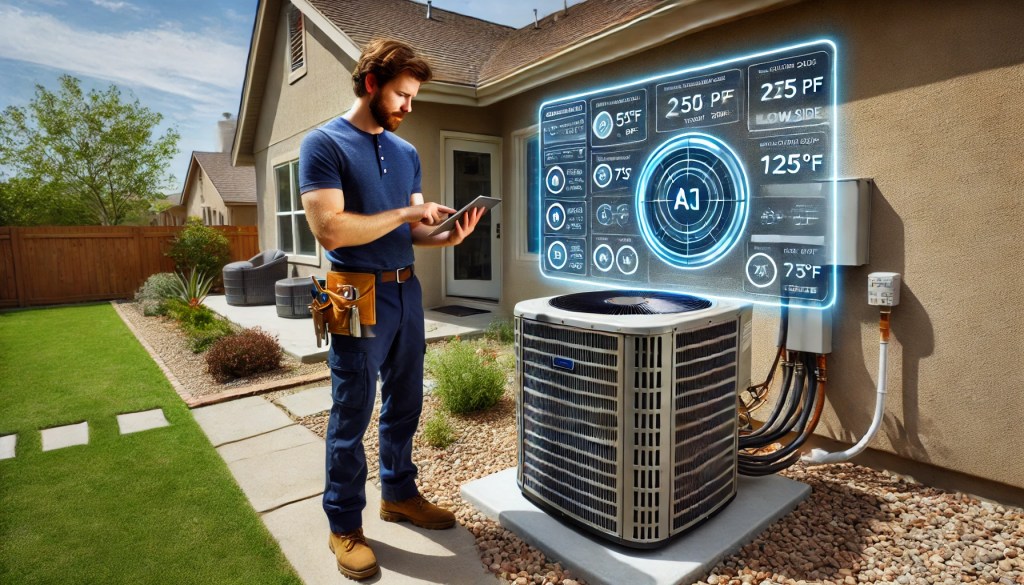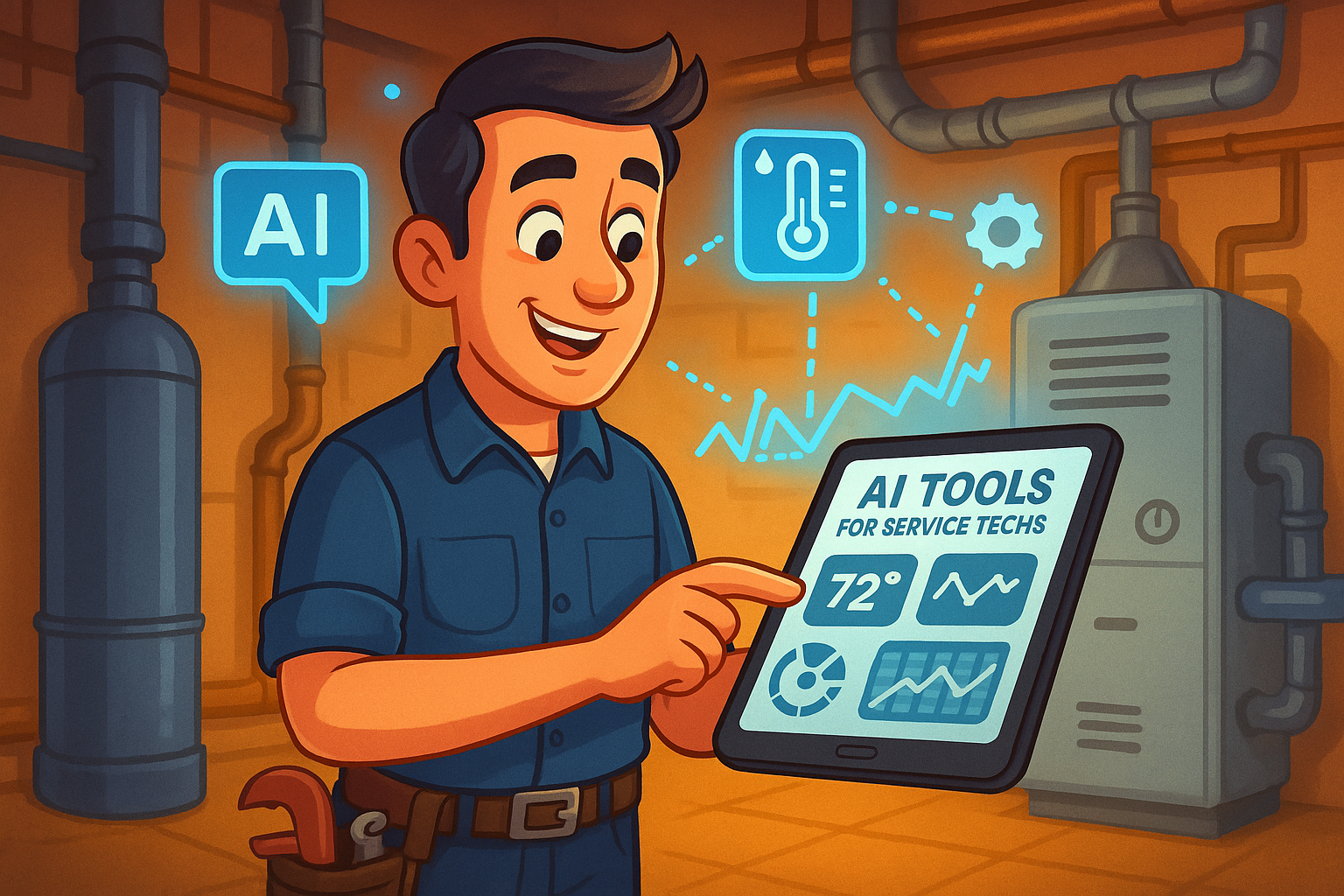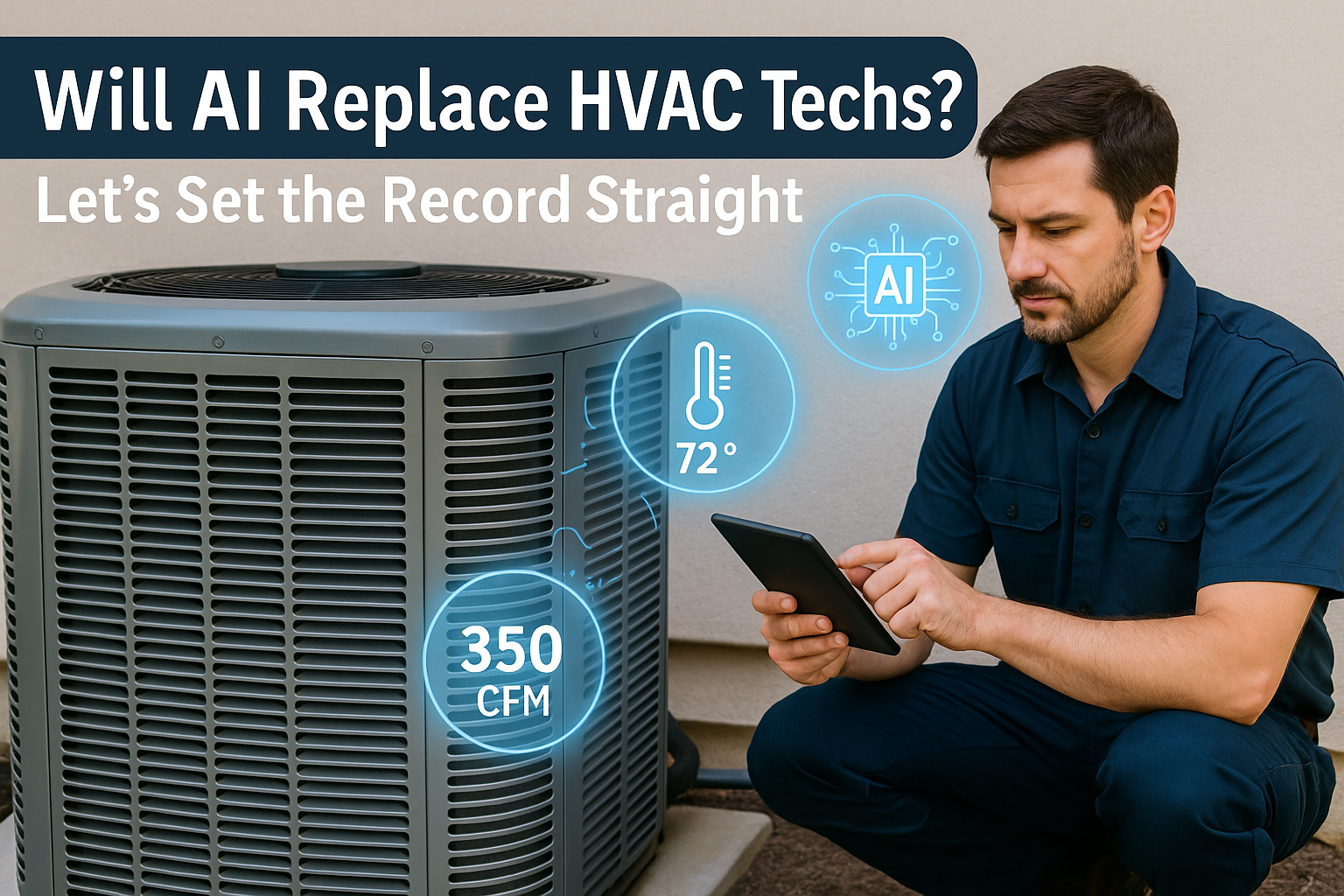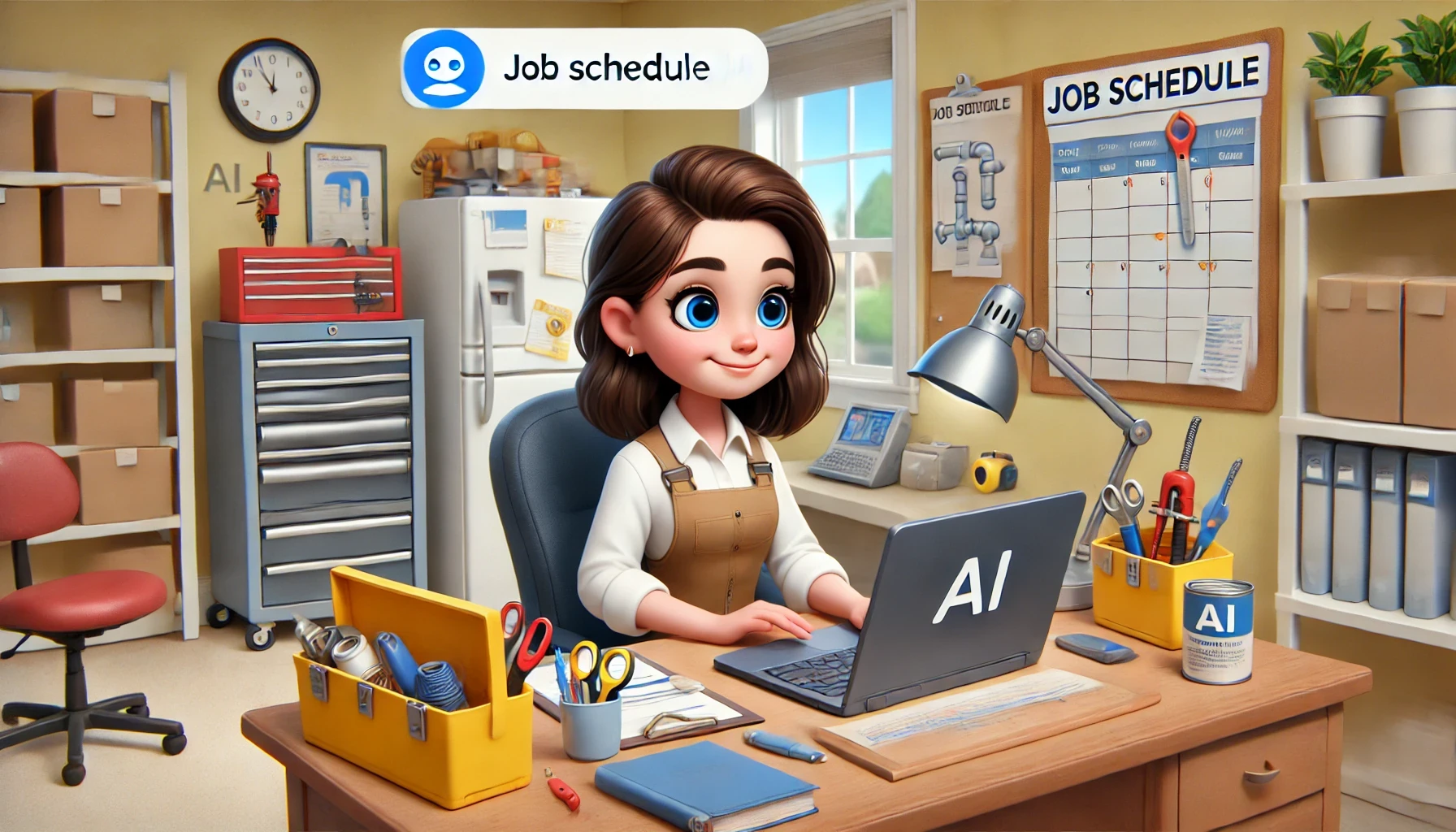How AI is transforming HVAC troubleshooting, maintenance, and energy efficiency. The tools and techniques that HVAC techs have relied on for decades are evolving—making way for smarter, faster, and more predictive solutions.

For decades, HVAC technicians have relied on experience, intuition, and a hands-on approach to diagnosing and repairing systems. A pressure gauge, a multimeter, and a trained ear have been the core tools of the trade. But as technology evolves, so does the way we maintain heating and cooling systems.
Artificial Intelligence (AI) is changing the game. From smart diagnostics to predictive maintenance, AI is making HVAC work faster, more efficient, and less reactive. But does that mean the old ways are obsolete? Not necessarily.
In this post, we’ll compare traditional HVAC troubleshooting methods with AI-powered approaches—breaking down where AI shines, where human expertise is still critical, and how HVAC pros can adapt to stay ahead in the field.
Traditional HVAC Troubleshooting: The Manual Approach
Before AI, troubleshooting an HVAC system meant following a structured trial-and-error process, using a combination of experience, reference materials, and physical testing to locate the root cause of an issue.
How Traditional Troubleshooting Works:
- Customer Complaint: The tech listens to the customer’s description of the issue.
- Visual & Auditory Inspection: Checking for leaks, corrosion, loose wires, or odd noises.
- Manual Testing: Using gauges and meters to check refrigerant levels, airflow, voltage, and amperage.
- Cross-Referencing Error Codes & Symptoms: Looking up codes in service manuals or online forums to narrow down possible issues.
- Systematic Process of Elimination: Testing different components one by one until the failure point is found.
The Challenges of Traditional Troubleshooting:
🔹 Time-Consuming: Diagnosing an issue manually can take hours, especially if the problem is intermittent or not immediately obvious.
🔹 Reliance on Experience: A seasoned tech can often diagnose a problem faster than a newbie, but this means learning curves are steep for those just starting out.
🔹 Reactive, Not Predictive: Traditional methods detect failures after they happen rather than preventing them.
While these methods are tried-and-true, they have limitations in an industry where speed, accuracy, and efficiency are increasingly important.
How AI is Changing HVAC Troubleshooting
AI-powered HVAC systems take troubleshooting to the next level by analyzing vast amounts of data in real time, detecting patterns that would take a human hours—or even days—to notice.
How AI-Assisted Troubleshooting Works:
- AI-Driven Diagnostics: Sensors in HVAC systems continuously monitor pressure, temperature, vibration, and electrical performance.
- Automated Fault Detection: AI flags irregular patterns (e.g., a compressor drawing slightly more power than normal) and suggests potential causes before a failure occurs.
- Predictive Maintenance Alerts: AI-based maintenance systems predict when parts will fail, allowing for repairs before breakdowns happen.
- Instant Error Code Interpretation: Instead of flipping through a manual, AI software instantly analyzes error codes and suggests likely causes.
- Remote Monitoring & AI Chatbots: AI-powered chatbots and remote monitoring dashboards allow techs to diagnose issues before stepping on-site—saving time and unnecessary service calls.
The Advantages of AI-Assisted HVAC Troubleshooting:
✅ Faster Diagnostics: AI can instantly analyze system performance data and flag potential failures, reducing troubleshooting time from hours to minutes.
✅ More Accurate Predictions: AI doesn’t just diagnose current problems—it predicts future failures.
✅ Better Learning for New Techs: AI-based tools help newer technicians troubleshoot with confidence, even if they lack years of field experience.
✅ Lower Costs & Fewer Callbacks: AI-driven diagnostics improve accuracy, reducing misdiagnoses and repeat service calls.
AI vs. Traditional HVAC Methods: Side-by-Side Comparison
| Feature | Traditional HVAC Troubleshooting | AI-Powered HVAC Troubleshooting |
|---|---|---|
| Diagnosis Speed | Can take hours, especially for complex issues | Analyzes sensor data instantly |
| Accuracy | Depends on technician’s experience | Identifies anomalies humans might miss |
| Predictive Capabilities | No predictive maintenance; issues addressed after failure | Predicts failures before they occur |
| Reference & Learning | Requires manuals, experience, and trial & error | AI cross-references vast datasets for instant recommendations |
| Cost & Downtime | More emergency repairs due to unexpected failures | Fewer breakdowns, reducing costly emergency calls |
| Scalability | Each tech must diagnose issues individually | Allows remote monitoring of multiple systems at once |
Takeaway: Traditional troubleshooting isn’t obsolete, but AI enhances efficiency, accuracy, and preventive maintenance—making it a must-have tool for modern HVAC techs.
Will AI Replace Traditional HVAC Work?
Despite AI’s advantages, it won’t replace human technicians. Here’s why:
Hands-On Repairs Still Require a Human: AI can diagnose, but it can’t replace a blower motor or recharge refrigerant—you still need skilled techs for that.
AI Lacks Field Knowledge & Adaptability: AI works off patterns and data. But sometimes, the “weird” issues—like a bad install or a custom setup—still require human intuition.
HVAC Techs Who Use AI Will Be More Valuable: AI won’t take jobs—it will make skilled techs more efficient. Those who learn AI tools will have a huge advantage over those who don’t.
How You Can Start Using AI in HVAC Today
AI is already here—so how can you start integrating it into your work?
🔹 Use AI-Enhanced Diagnostic Tools – Many HVAC brands now offer AI-powered diagnostic apps to interpret error codes, analyze sensor data, and suggest fixes.
🔹 Explore Predictive Maintenance Platforms – If you work with commercial systems, tools like automated fault detection & remote monitoring dashboards can help predict failures before they happen.
🔹 Learn AI-Powered Troubleshooting Chatbots – AI chatbots like ChatGPT can suggest solutions based on system data, making troubleshooting faster and more accessible for newer techs.
🔹 Stay Informed – AI in HVAC is evolving fast. Keep up with industry trends and new AI-powered tools so you don’t get left behind.
Conclusion: The Future of HVAC is a Mix of Both
AI isn’t replacing HVAC techs—it’s making us better.
The best technicians won’t be the ones who ignore AI… they’ll be the ones who learn to use it as a tool alongside traditional methods. Combining hands-on skills with AI-driven insights will create the most efficient, skilled, and in-demand HVAC pros.
This is just the beginning. Next week, we’ll dive into “Smart Thermostats & Beyond: Everyday AI in HVAC,” breaking down how AI is already in homes and commercial spaces today.
Want to stay ahead?
📩 Subscribe for updates on AI in HVAC & my upcoming book, AI 4 HVAC.
💬 Drop a comment—what do you think about AI in HVAC? Are you using it yet?



